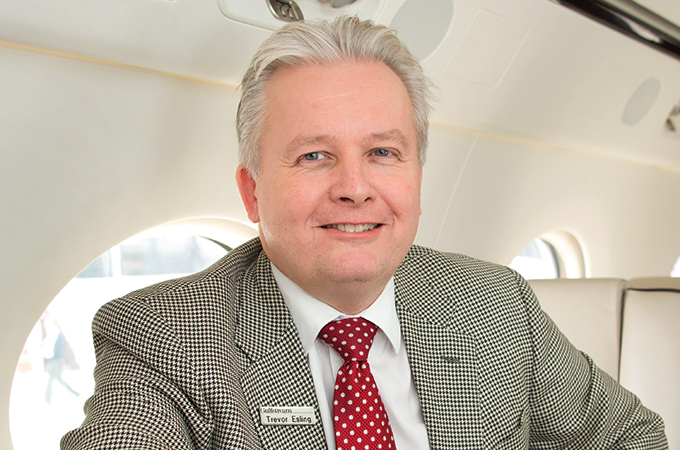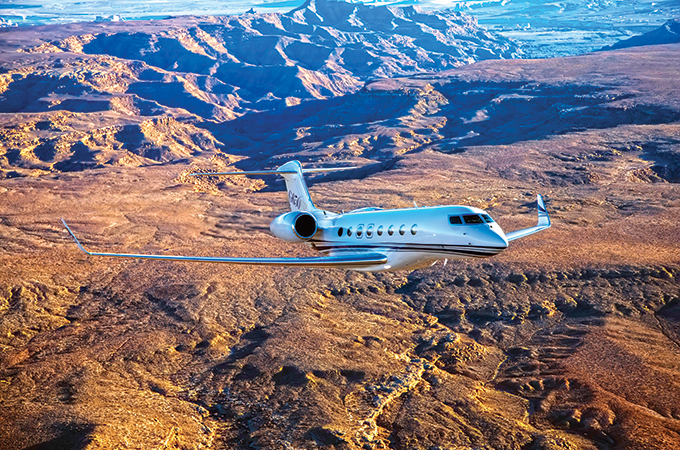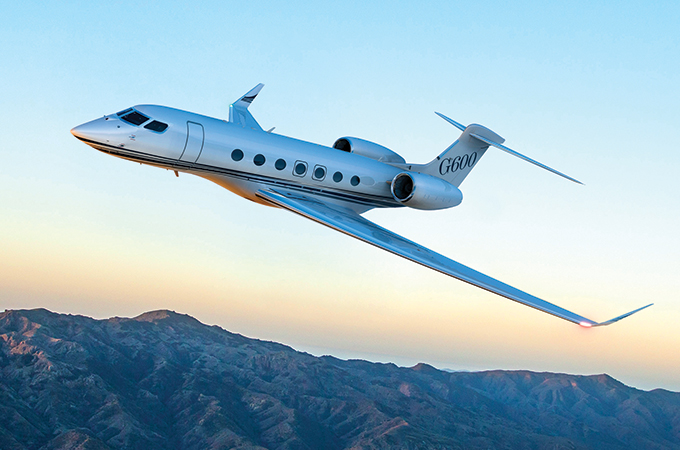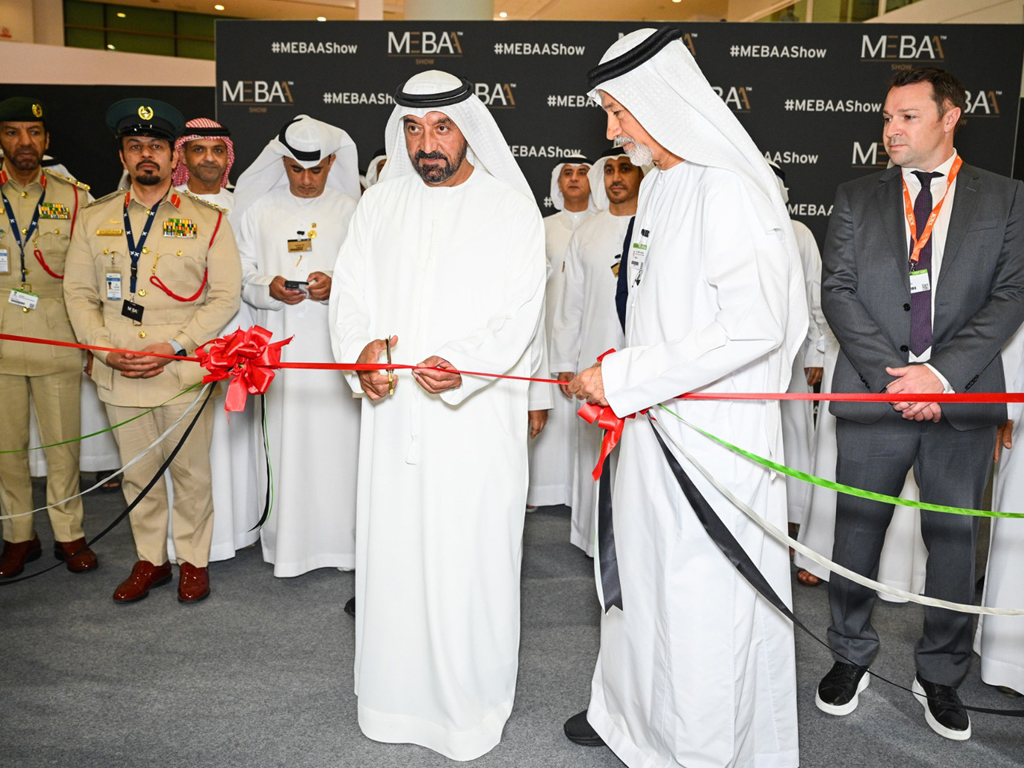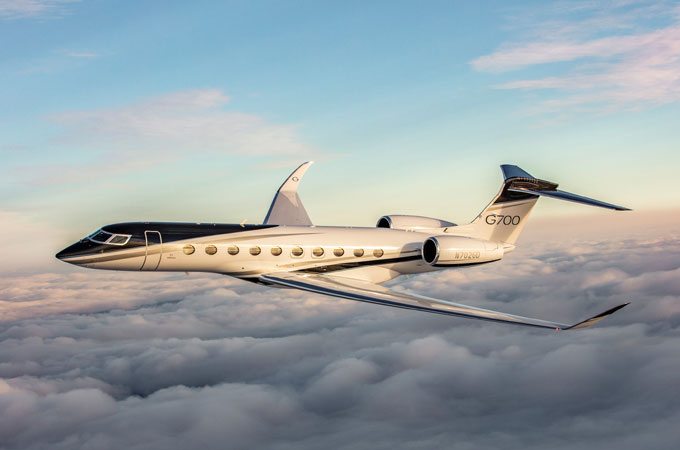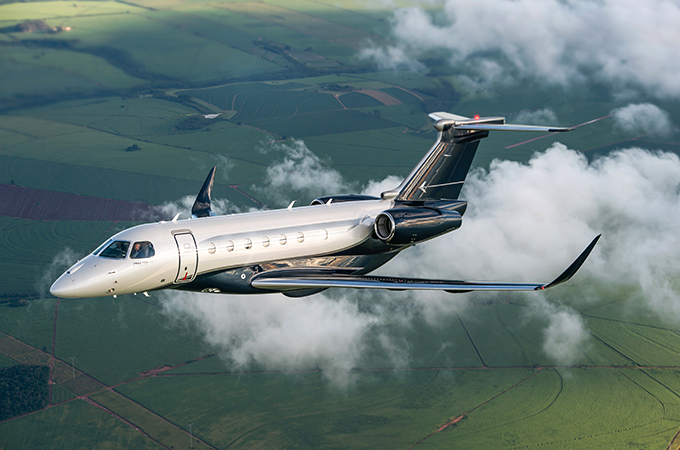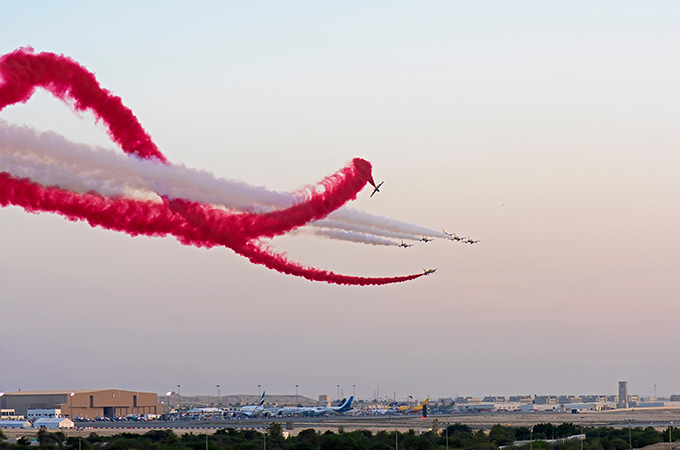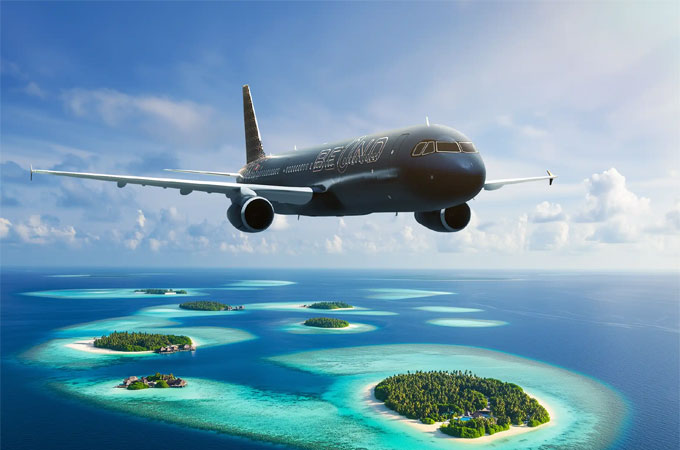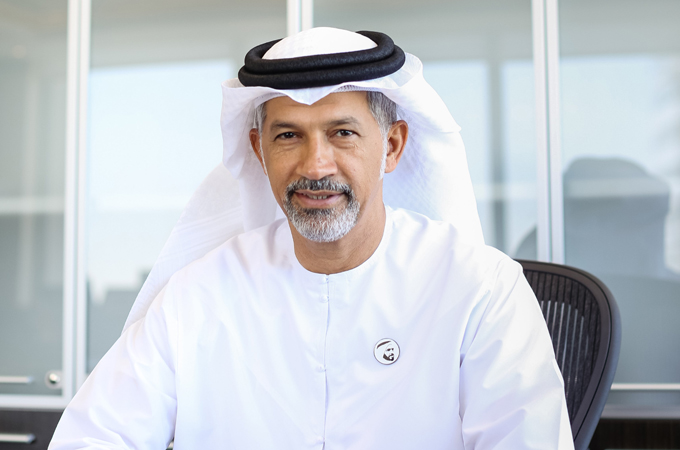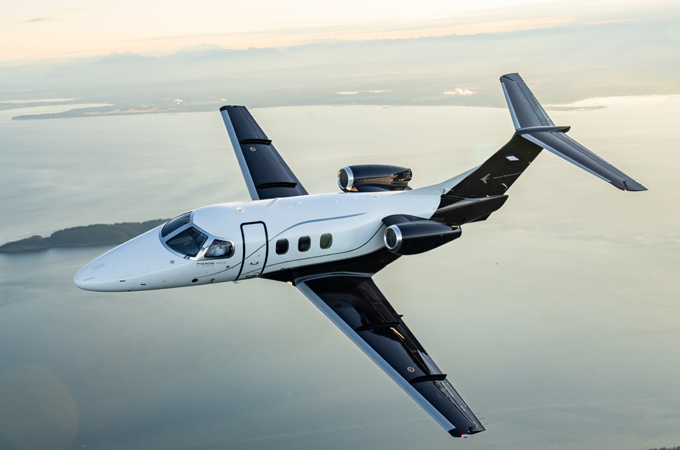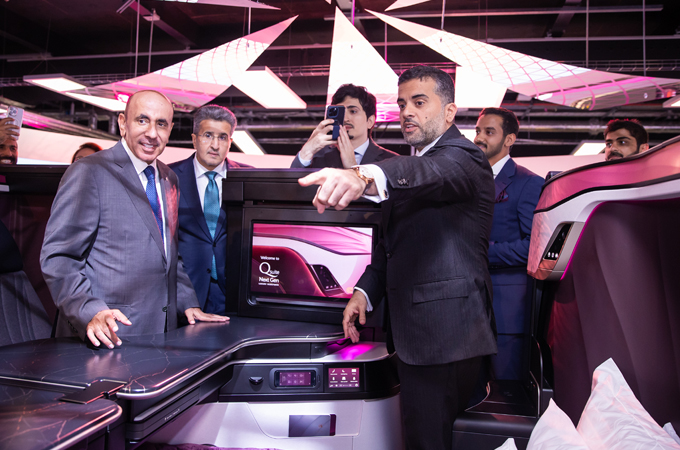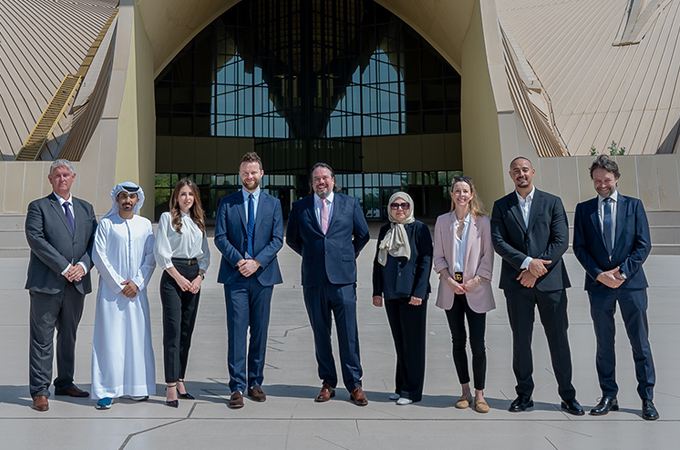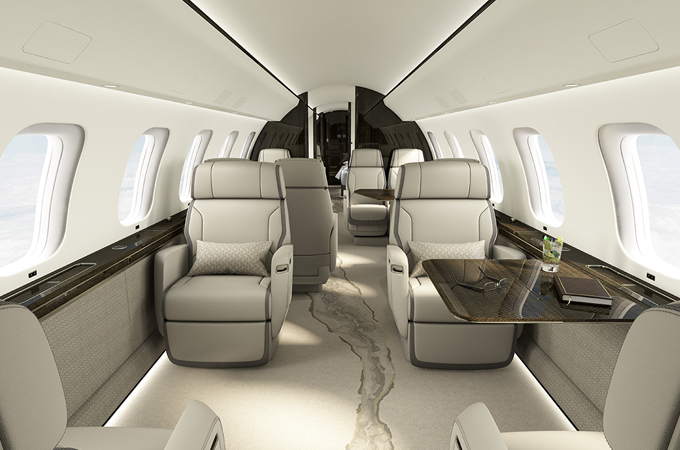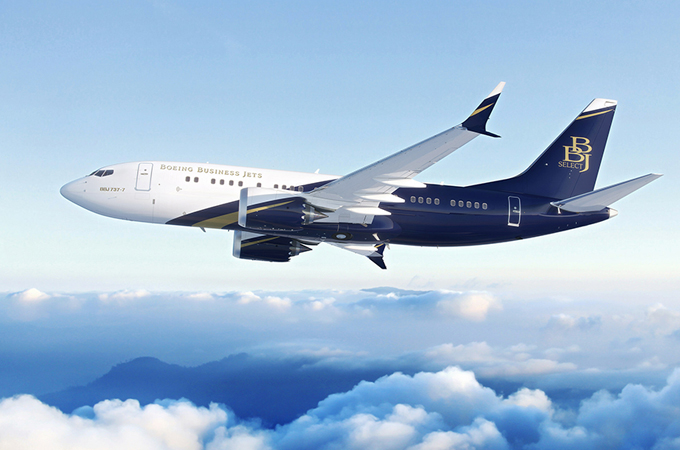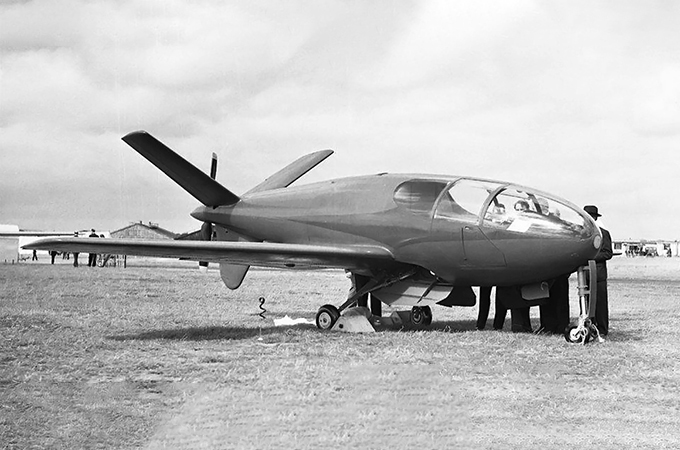Winter 2016
Gulfstream sees good prospects for its state-of-the-art business jets in the Middle East, including its flagship G650ER
Gulfstream’s G650 and G650ER business jets are state-of-the-art aircraft. Fast, efficient and with the latest in avionics and engine technology, the next barrier for the US business jet-maker to cross is the sound barrier.
It is not however the physical or engineering challenges that prevent Gulfstream doing that, but the political and regulatory environment.
“Our customers require greater speed, their business jets are time machines and to them time is money,” Trevor Esling, Regional Senior Vice President, International Sales, Europe, Middle East and Africa, tells Arabian Knight.
With a top speed in some of their models of Mach 0.925 and the company’s power and design technology readily available to push through the sound barrier (Mach 1), they are about as close as they are legally able to get.
“International regulations don’t allow supersonic flight over land – so until those regulations are changed, we don’t see a business case for making a plane that is allowed to fly supersonic only over water.”
It is a fairly simple equation. Flying over water for most or all of a route where it can be achieved would in many cases add hundreds or even thousands of miles to the journey. What is gained in speed would be lost by extra distance and the critical element, time, would not be saved.
One example is the case of the US, the biggest business jet market of all. Within the continental US, flight paths between major centres almost never cross over water and few, save north/south costal routes, could.
“I can certainly think of a number of customers who would be very interested in a supersonic business jet but until the regulatory and political environment changes, we cannot oblige,” muses Esling.
This poses an interesting conundrum for business jet makers. With Gulfstream pushing hard at the Mach 1 limit, which sets the same barrier for competing manufacturers, the development of the Gulfstream range has to focus on making the best even better.
“It will be a case of incremental advances in emissions, reduced noise, range, efficiency, cockpit technology and so on. Until the regulatory environment changes, then this is where development will be.”
For example, Gulfstream recently signed a three-year contract with World Fuel Services to supply a 30/70 per cent biofuel and jetfuel blend for its flight-test, product support and demonstration aircraft. The biofuel element is made from agricultural waste product, which should yield an overall reduction of 50 per cent in greenhouse gas emissions.
NEXT GENERATION
The development of the next generation of Gulfstream aircraft is well under way. “The G500 and G600 are our ‘next generation’ of aircraft,” notes Esling.
‘Next generation here and now’ – a contradiction? No.
It takes two-and-a-half years of testing and flights to certify a new aircraft on top of the design and prototype build time. Considerations of safety are paramount, and a host of other technical aspects – avionics, engineering, environmental and fuel efficiency – all are in the extremely complex mix that eventually produces a safe, efficient and reliable machine with an airworthiness certificate.
The G500’s first flight in May 2015 was a critical milestone that kept the aircraft’s flight test and certification programme on track for its projected 2017 certification from the Federal Aviation Administration (FAA) of the US and European Aviation Safety Agency (EASA). It will come to the market in 2018.
The auguries are good for the G500, which is designed to fly 5,000 nautical miles (nm) at 0.85 Mach and 3,800 nm at 0.90 Mach, Gulfstream officials predict. The cruising speed for the aircraft will be Mach 0.925. On November 12 however in Savannah T1, the first of the flying G500s, reached an altitude of 50,000 ft and a speed of Mach 0.995 which exceeds expectations.
The G500 and G600 are slightly smaller aircraft than their stable companions the G550 and G650. Although not designed specifically for the charter market, they have attracted considerable interest from that sector. Qatar Executive purchased up to 30 aircraft from Gulfstream earlier this year, and will be providing a charter capability out of Doha.
It is a combination of firm orders and options and includes the G650ER, G600 and G500.
Esling observes: “This is a big year for us, delivery of the first G650ER to Qatar, we will get a lot of exposure from that. There are no commercially available G650s for charter. The Gulfstream aircraft owned here in the Middle East are private.”
Development of Gulfstream G600, a longer-cabin and longer-range variant of G500, remains on track, with assembly of the first aircraft under way in Gulfstream’s Savannah home. Both aircraft specify 4,850 ft maximum cabin altitudes at 51,000 ft. At typical cruise altitudes, cabin altitude will be 3,500 ft to 4,500 ft.
The G500 and G600 will have ranges of 5,000 nm and 6,200 nm respectively. They share many of the characteristics of the bigger G650, but are smaller aircraft with a lower price point.
Other specs included on both aircraft are: all-new Symmetry flight deck with active control sidesticks, 10 integrated touchscreens, and a digital fly-by-wire system to promote stability.
Active control sidesticks are a first for business aviation.
“When one pilot operates the stick, it’s mirrored on the other stick. This develops a good understanding and cooperation between pilots and perfectly communicates who is flying the aircraft at any one moment,” explains Esling. “We believe that this constant awareness dramatically improves the overall safety of the craft. It’s the modern iteration of the classic ‘twin yoke’ set-up.”
Both the G600 and G500 can cruise at 51,000 ft and have short take-off runs – the G500 at 5,200 ft and the G600 at 5,700 ft.
CUSTOMISED OPTIONS
Purchasing a new business jet involves a considerable expense and although there are several ‘off-the-shelf’ options, Esling notes that almost always the customer want their aircraft customised. Customers sometimes charter one to test it out and create their own experience; at other times Gulfstream make one available from their permanent fleet of demonstration aircraft.
“Within the package there are standard options – but everything is customised within that. It’s a personal travel and living space, an extension of their house, boat and so on or perhaps even corporate configurations.
“It’s a long wait for a new one – but because of the reputation of the G650, people are prepared to wait. It’s the aeroplane at the top of the market, people want it the way they want it and you really have to be able to meet the client’s individual specifications for an aircraft. It is not a trivial purchase,” he says.
Apart from the obvious décor and interior, sophisticated electronics, particularly wi-fi and satellite communications at various levels of complexity are standard requests now and all part of the custom package.
The fitting out and customisation stages are all done by Gulfstream in-house; the company stopped delivering ‘green’ aeroplanes – ones in a flying condition but yet to be fitted out – nearly 20 years ago.
Gulfstream arrived at last November’s Dubai Airshow in grand style, its premium G650ER casually setting a new speed record on the way. Certified in 2014, this aircraft saw off the 6,679 nm from Savannah (US) to Dubai in 13 hours flat, logging an average cruise speed Mach 0.89.
“We know from our customers that they want speed,” says Esling. Range, it seems, is also available. Existing G650 customers can upgrade the 650 to an ER – with changes to the fuel system, heavier take-off weight and some changes to the performance and fuel quantity computers. This would be an option for existing G650 owners to consider seriously, as the waiting list for a new G650ER stretches well into 2018.
Gulfstream brought four models to the air show: the G280, the G450, the G550, and the top-of-the-line G650ER.
Steve Cass, Vice President of Communications for Gulfstream, observes that the Middle East is still a vibrant market. “We see a lot of the large cabin aircraft based in the Middle East, an ideal environment for Gulfstream. The new G650 is perfect for this marketplace.”
Esling agrees: “The Middle East for us remains the biggest and most vibrant market even with oil prices coming down. Our customers include governments, heads of state, corporate and high-net-worth individuals. We have quite a lot of momentum.”
The Far East – with China’s economy easing down a little – has slowed somewhat over the last two years but is still active. In the US however, the biggest business jet market in the world, has picked up – mainly in the traditional demographic, Fortune 500 companies and high-net-worth individuals.
The South American market dominated by Brazil has experienced a slowdown. However Gulfstream have some 40 aircraft in the region, with some clients in Brazil purchasing this year.
Russia, says Cass, is a unique market with what he described as a ‘headwind’ provided by economic sanctions. “The demand is still alive though,” he says.
With their long range, high speed and, at least compared with large commercial aircraft low running costs, the business jet’s compact configuration has generated a small but valuable market.
“Special missions represent about 10 per cent of our business. Our aircraft are designed to fly at very high altitude – up to 51,000 ft, some 10-15,000 ft above commercial air-lanes and especially at lower speeds, have the ability to loiter for very long periods of time,” says Esling.
This makes them the perfect platform for reconnaissance, surveillance and search and rescue and the gathering of data from high altitude for environmental, meteorological and other scientific investigations.
“These are for Gulfstream very interesting times with the new generation of business jets arriving in service soon,” says Esling. “Moreover, with the regulatory restrictions Mach 1 barrier, we will be able to refine our fleet to even greater heights.”
Gulfstream are rather good at that.



